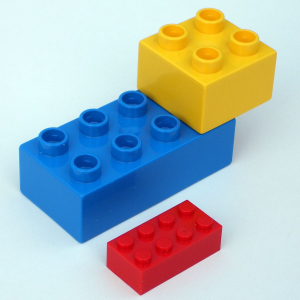 Its been a little over 2 years since I first posted about Change Agent networks, the role of Change Agents and their relevant benefits. They are popular articles and I’ve seen readership reach thousands across them all, prompting me to realise that there is appetite out there for their purpose and the topic worthy of an additional visit.
Its been a little over 2 years since I first posted about Change Agent networks, the role of Change Agents and their relevant benefits. They are popular articles and I’ve seen readership reach thousands across them all, prompting me to realise that there is appetite out there for their purpose and the topic worthy of an additional visit.
One of my frequent mantras is that successful change is done with people, not to people. When you have a cohesive groups of people all experiencing the change together, they can mutually support and carry each other through the ups and downs of the change. They feel part of the change, have a sense of ownership and are far more readily inclined to engage with the change on a personal and thus professional level.
Change initiatives are generally driven from the top. A strategic delivery, business realignment or improved operational activity is cascaded into the business. For the groups of people at the sharp end of these changes, they frequently resist, push back or become disengaged with the change because they feel it is done to them. Unfortunately, this is often the delivery model organizations follow. These approaches are driven from a focus in project management or technology implementations which focus on deliverables, outputs, Go-Live dates and other such key goals. These are key indicators for the delivery of a change, but not the reflective of the true success needed, that of gaining employee, consumer or stakeholder adoption.
I’ve said before that Change Management is not a one size fits all approach. Driving change management as some side piece to delivering the new initiative or encasing it the same old methodology as every other change, is just asking for failure. Focusing on the people is at the heart of change and Change agents are key to navigating that successful pathway of both head and heart.
 The simple truth is that successful change needs many people to play the part of Change Agent where that Change Agent is a role beyond that of the change manager or change lead person for the project, initiative or activity. Change Agents can of course be these full-time roles, but my view defines them as being anyone with responsibility for enabling the people in the organization to engage, accept and move forward with the change as it affects them and those around them. So, for me, Change Agents are people throughout the business who connect the top to the bottom, the process to the people and the operational to the strategic for any change event.
The simple truth is that successful change needs many people to play the part of Change Agent where that Change Agent is a role beyond that of the change manager or change lead person for the project, initiative or activity. Change Agents can of course be these full-time roles, but my view defines them as being anyone with responsibility for enabling the people in the organization to engage, accept and move forward with the change as it affects them and those around them. So, for me, Change Agents are people throughout the business who connect the top to the bottom, the process to the people and the operational to the strategic for any change event.
Change Agents may be senior managers, team leaders or front-line staff. Some of the best placed Change Agents will be the go-to people in the organization who readily show they have an informal leadership within their workplace. Connecting all the Change Agents provide us with the network. A network that functions beyond the typical cascading communications and project dictated control processes. These people operate in multiple directions outside the traditional hierarchal structure. Their role is to support each other and work with everyone to help them understand the change and how they are affected. The Change Agent is far more than a champion for the change. The Change Agent is a connector that allows 2-way communications between the delivery focused team and the people at the front-line of the change. All organizations that have these networks in place are far more successful in delivering change.
Why are Change Agent networks successful? Three key reasons:
- The Change Agents are supporting the business from the inside out, working with the people affected by the change;
- The network has 2-way interactions. The Change Agents are key subject matter experts for their function and providing feedback to the delivery team, yet they also provide a fast and direct access route to those at the frontline.
- The Change Agents are trusted advisors to all, understanding the business, its people and with quality education, able to expertly navigate emotion driven responses that go with any change within the business area.
When it comes to the success or failure of a change, the label is often defined by the way we measure it. In my view a change is only a success if it has realised the benefits that were foreseen at the point of origin. Those benefits can only be truly arrived at, when the people are performing the new or different activity in the business. Changes are ultimately successful because of the people, not because of the process applied and people help people to deal with change.


Leave a Reply
Want to join the discussion?Feel free to contribute!